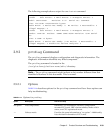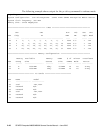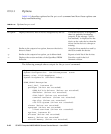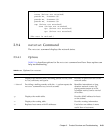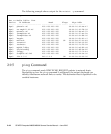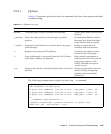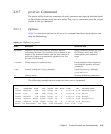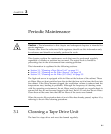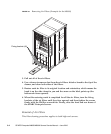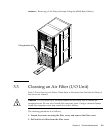
2-46 SPARC Enterprise M8000/M9000 Servers Service Manual • June 2010
2.9.6 ps Command
The ps command lists the status of processes. Using options and rearranging the
command output can assist in determining the resource allocation.
2.9.6.1 Options
TABLE 2-18 describes options for the ps command and how those options can help
troubleshooting.
The following example shows output for one ps command.
Note – When using sort with the -r option, the column headings are printed so that
the value in the first column is equal to zero.
TABLE 2-18 Options for ps
Option Description How It Can Help
-e Displays information for every process. Identifies the process ID and the
executable.
-f Generates a full listing. Provides the following process
information: user ID, parent
process ID, time when executed,
and the path to the executable.
-o option Enables configurable output. The pid, pcpu, pmem, and
comm options display process ID, percent CPU consumption,
percent memory consumption, and the responsible
executable, respectively.
Provides only most important
information. Knowing the
percentage of resource
consumption helps identify
processes that are affecting
performance and might be hung.
# ps -eo pcpu,pid,comm|sort -rn
1.4 100317 /usr/openwin/bin/Xsun
0.9 100460 dtwm
0.1 100677 ps
0.1 100600 ksh
0.1 100591 /usr/dt/bin/dtterm
0.1 100462 /usr/dt/bin/sdtperfmeter
0.1 100333 mibiisa
%CPU PID COMMAND
0.0 100652 /bin/csh
. . .




